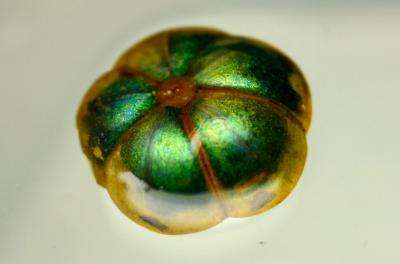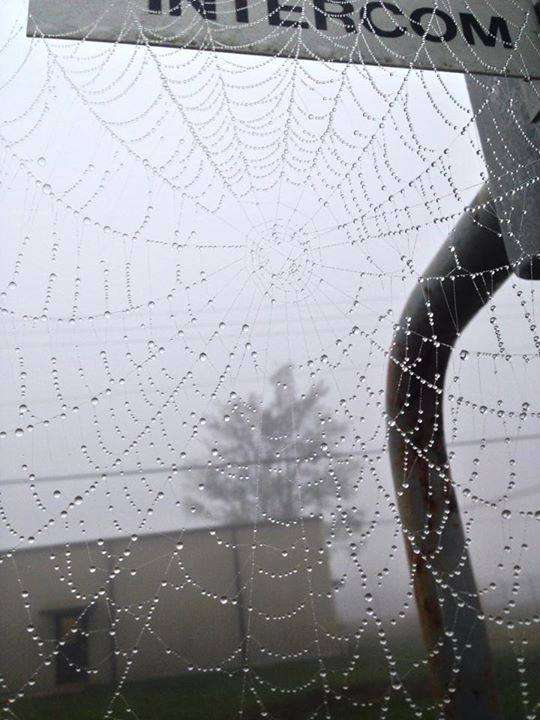- Posts: 4760
- Thank you received: 0
Science Odds and Ends
- TPP
-

- User is blocked
-

http://www.foxnews.com/science/2012/09/06/how-astronauts-used-toothbrush-to-fix-space-station/
Only, used a toothbrush, because he didn't have duct tape, bailing wire, or super glue, (I know Bubble-gum wouldn't work, besides how would you get it from you're mouth to the spot?, without imploding that is...)
Please Log in or Create an account to join the conversation.
- TPP
-

- User is blocked
-

- Posts: 4760
- Thank you received: 0
But this is a 'dry ice' variety; it's the only planet in solar system known to see phenomenon
This is really good news, since the global warming folks, think that CO2 is one of the causes of global warming. Mars will soon be the vacation spot, red sands, warm wind breezes across the pole, Hyatt may already be buying land.
Please Log in or Create an account to join the conversation.
- ScienceChic
-
 Topic Author
Topic Author
- Mountain Champion
-

- Posts: 15745
- Thank you received: 320
Bioinspired fibers change color when stretched
Contact: Caroline Perry
January 28, 2013

Credit: Image courtesy of Peter Vukusic.
A team of materials scientists at Harvard University and the University of Exeter, UK, have invented a new fiber that changes color when stretched. Inspired by nature, the researchers identified and replicated the unique structural elements that create the bright iridescent blue color of a tropical plant's fruit.
The multilayered fiber, described today in the journal Advanced Materials, could lend itself to the creation of smart fabrics that visibly react to heat or pressure.
"Now, more than ever, the illusions of division threaten our very existence. We all know the truth: more connects us than separates us. But in times of crisis the wise build bridges, while the foolish build barriers. We must find a way to look after one another as if we were one single tribe.” -King T'Challa, Black Panther
The truth is incontrovertible. Malice may attack it. ignorance may deride it, but in the end, there it is. ~Winston Churchill
Please Log in or Create an account to join the conversation.
- pacamom
-

- Mountain Legend
-

- Posts: 2573
- Thank you received: 33
Please Log in or Create an account to join the conversation.
- ScienceChic
-
 Topic Author
Topic Author
- Mountain Champion
-

- Posts: 15745
- Thank you received: 320
April 2, 2013
This is the moon:


See link for other planets!
"Now, more than ever, the illusions of division threaten our very existence. We all know the truth: more connects us than separates us. But in times of crisis the wise build bridges, while the foolish build barriers. We must find a way to look after one another as if we were one single tribe.” -King T'Challa, Black Panther
The truth is incontrovertible. Malice may attack it. ignorance may deride it, but in the end, there it is. ~Winston Churchill
Please Log in or Create an account to join the conversation.
- ScienceChic
-
 Topic Author
Topic Author
- Mountain Champion
-

- Posts: 15745
- Thank you received: 320

Check out this spiderweb that Destin from Smarter Every Day found on a foggy morning. Think about how much the water weighs compared to the spiderweb. Think about the internal angles of the thread. In engineering there is a term called zero force member. A zero force member is where a joint at a 90 degree angle exists. Even though a spider has a very small brain he knows not to create a zero force member. Amazing.
If you love learning stuff, check out SmarterEveryDay on YouTube: http://bit.ly/eg9CEX or download episodes for free on iTunes: http://bit.ly/1iiQ9eW
"Now, more than ever, the illusions of division threaten our very existence. We all know the truth: more connects us than separates us. But in times of crisis the wise build bridges, while the foolish build barriers. We must find a way to look after one another as if we were one single tribe.” -King T'Challa, Black Panther
The truth is incontrovertible. Malice may attack it. ignorance may deride it, but in the end, there it is. ~Winston Churchill
Please Log in or Create an account to join the conversation.
- ScienceChic
-
 Topic Author
Topic Author
- Mountain Champion
-

- Posts: 15745
- Thank you received: 320
The art of science: Stunning, psychedelic images from Fabian Oefner
Posted by: Morton Bast
October 3, 2013
Video (12:05 in length): http://www.ted.com/talks/fabian_oefner_ ... ic_science
Swiss artist and photographer Fabian Oefner is on a mission to make eye-catching art from everyday science. In this charming talk, he shows off some recent psychedelic images, including photographs of crystals as they interact with soundwaves. And, in a live demo, he shows what really happens when you mix paint with magnetic liquid—or when you set fire to whiskey.
"Now, more than ever, the illusions of division threaten our very existence. We all know the truth: more connects us than separates us. But in times of crisis the wise build bridges, while the foolish build barriers. We must find a way to look after one another as if we were one single tribe.” -King T'Challa, Black Panther
The truth is incontrovertible. Malice may attack it. ignorance may deride it, but in the end, there it is. ~Winston Churchill
Please Log in or Create an account to join the conversation.
- ScienceChic
-
 Topic Author
Topic Author
- Mountain Champion
-

- Posts: 15745
- Thank you received: 320
by Matt Wilstein | 9:22 pm, May 30th, 2014
If you wanted to spend your Friday night watching two very smart guys get seriously wonky about the biggest scientific mysteries of the universe, all you needed to do is tune into the last few minutes of MSNBC’s All In with Chris Hayes. Cosmos host Neil deGrasse Tyson joined Chris Hayes to share his thoughts about the scientific advancements he thinks will be more profound in the decades to come.
"Now, more than ever, the illusions of division threaten our very existence. We all know the truth: more connects us than separates us. But in times of crisis the wise build bridges, while the foolish build barriers. We must find a way to look after one another as if we were one single tribe.” -King T'Challa, Black Panther
The truth is incontrovertible. Malice may attack it. ignorance may deride it, but in the end, there it is. ~Winston Churchill
Please Log in or Create an account to join the conversation.
- Blazer Bob
-

- Mountain Legend
-

- Posts: 10449
- Thank you received: 70
Please Log in or Create an account to join the conversation.
- ScienceChic
-
 Topic Author
Topic Author
- Mountain Champion
-

- Posts: 15745
- Thank you received: 320
Scientists are closer than ever to a universal flu vaccine
And it could do away with the need for annual injections.
BEC CREW
25 AUG 2015
"During the last flu season, mutations in the HA molecule on one of the most common circulating strains, H3N2, meant that the seasonal flu vaccine offered little protection," Ian Sample writes at The Guardian. "Public Health England said in February that the less effective vaccine was likely to have been behind a steep rise in flu deaths."
This new vaccine, on the other hand, targets a part of the HA molecule that changes far less rapidly than the head. Described in separate papers in Science and Nature Medicine this week, the vaccine targets the 'stem' of the molecule, which mutates far slower across seasons and strains than the head.
This might sound like an obvious fix, but developing a vaccine that targets the stem has been no small feat. An antibody that binds to the HA stem instead of the head was only discovered back in 2008, and when scientists built these antibodies into a vaccine, they couldn’t figure out how to make the body’s immune system ignore the head and go for the stem.
The next step will be to get both versions of the vaccine to human trials to see if these results can be replicated, and unfortunately, that will likely take several years.
ScienceChic wrote: How Close Is a Universal Influenza Vaccine That Could Provide Lifelong Immunity with One Shot?
By Katherine Harmon October 18, 2010[An edited transcript of the interview with Peter Palese, a co-author of the new study and chair of the Department of Microbiology at Mount Sinai School of Medicine in New York City, follows.]The hunt for a universal flu vaccine, a single shot that would provide lifelong immunity, has been going on for decades, and many teams of researchers have been on the case. The effort is complicated because there are some 16 types of key surface proteins (hemagglutinin) that help the virus bind to host cells, in addition to the several varieties of viral neuraminidase proteins. Changes in the viruses' proteins help it evade identification by the immune system.
A series of discoveries by different groups of researchers have zeroed in on a highly conserved (nonmutated) region of the virus. And a new study, published online October 18 in Proceedings of the National Academy of Sciences, has piggybacked on these findings to develop synthetic vaccine that has been effective in warding off several different types of influenza in mice. How does it work—and could it work in humans?
The study: www.pnas.org/content/early/2010/10/06/1013387107.abstract
"Now, more than ever, the illusions of division threaten our very existence. We all know the truth: more connects us than separates us. But in times of crisis the wise build bridges, while the foolish build barriers. We must find a way to look after one another as if we were one single tribe.” -King T'Challa, Black Panther
The truth is incontrovertible. Malice may attack it. ignorance may deride it, but in the end, there it is. ~Winston Churchill
Please Log in or Create an account to join the conversation.









